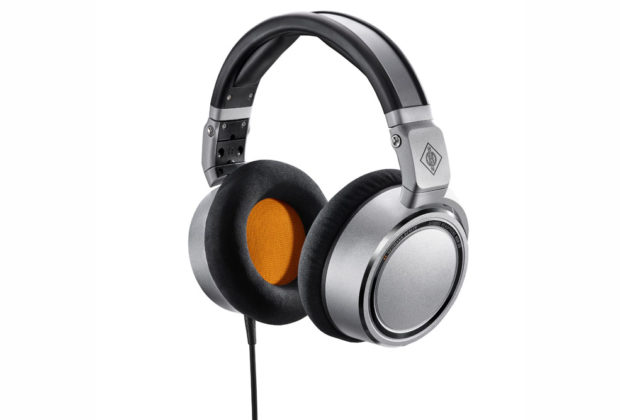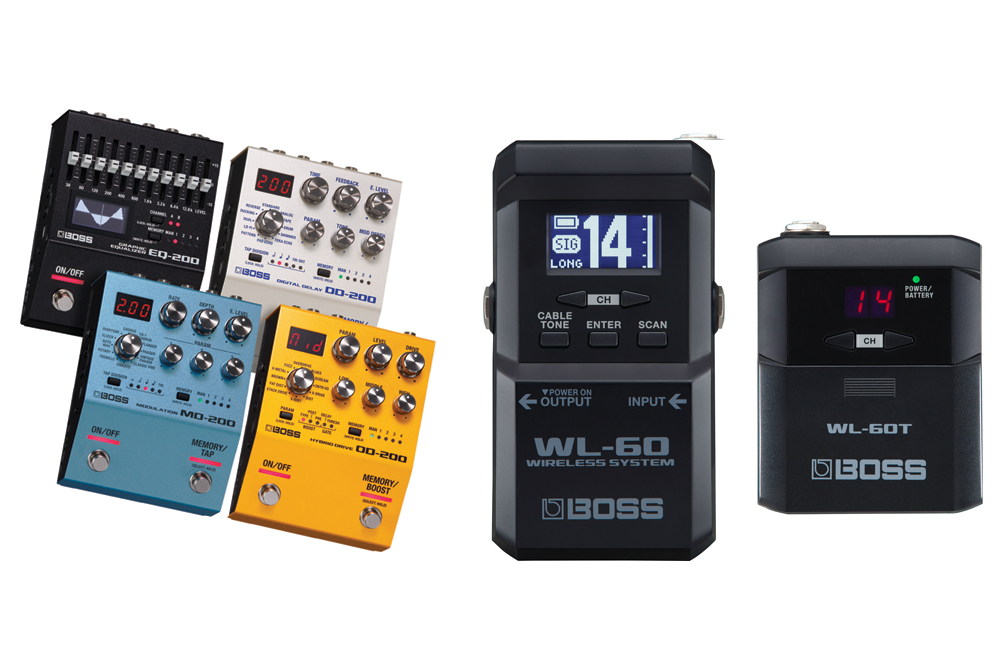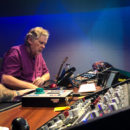Designed for music mixing, the new Neumann NDH 20 closed-back circumaural studio headphones. These combine better isolation with an excellent, balanced sound and good stereo imaging. The goal is to provide recording studio-level monitoring accuracy and performance with portability and the suppression of external and interfering noise.
Neumann has solved a problem with closed-back headphones having "nasty resonances in the mid-band, making it difficult to come to reliable mix decisions...." So clearly these new NDH 20 headphones were conceived and designed not only for studio monitoring and editing but also for mixing music as well.
The NDH 20 headphones have newly designed 38-mm drivers (1.5-inches) with neodymium magnets. Their nominal impedance is 150-ohms and sensitivity is rated at 114dB SPL (1kHz, 1 Vrms). They will work great with your smart phone and come with both a 1.5-to-3-meter curly-cord for studio use and a straight, 3-meter cable to fit your phone's analog headphone socket. Frequency response is 5Hz to 30kHz and they will handle up to 1 watt of audio power input! The NDH 20s' response is flat and unflattering--exactly what I prefer for professional music mixing. Their un-hyped sound reminds me of Neumann's studio monitor loudspeaker line--I'm familiar with Neumann's KH 310 three-way monitors and I love their sound. Putting these headphones on takes me right to the KH line.
A crucial specification is sound isolation; it is greater than 34dB (@ 1kHz) and I did find external sounds in the studio reduced. Plus, when the ND 20s are played loud, they seal well around a player or singer's head and prevent leakage or spill into the recording microphones.
One of reasons they are so comfortable to wear on my head is because of the plush (and replaceable) ear cushions made from soft memory foam. It also helps that a pair of ND 20s weighs just 388-grams.
I put the NDH 20s to work in my studio with tests plugged into either of my two cue systems. I have a 100-watt Hafler power amp driving a Simons Systems CB-4 passive box for the studio headphones plus, at the mixer's listening position, an Aphex Headpod 4 powered headphone box.
Unlike most headphones, the cable on the NDH 20 comes out the right ear cup not the left. I'm right handed so thumbs up for me! (I actually mounted the Aphex Headpod amp underneath the right side of my desktop and so all good for me!)
I started listening to past mixes I had done and compared the sound I had arrived at using just my main monitors in my acoustically treated mix room. It is remarkable how close the sound of these mixes playing on the NDH 20s compared to my monitors! In fact, I could hear deeper into the mix revealing detail that I knew was there but found it difficult to discern on many outside monitor systems at other professional studios.
Without any room acoustics factored in, listening on headphones during mixing is useful to check panning positions, intrusive noise problems--pops and clicks, and the excessive use of ambience effects--reverbs and delays. Because of the effect of "masking" by other elements in the mix it easy to miss those problems listening only on speakers. Furthermore, mixing in less than sonically accurate or untreated rooms makes reliance on proper headphones even more essential.
In conclusion, I think Neumann has developed an excellent new tool with the NDH 20s; they offer a new level of scrutiny and referencing in my mix process with their accurate (non-hyped) sound. They are easy to wear, look handsome and are portable enough to become part of my kit when traveling. I am highly recommending them to anyone relying on headphones for song writing, music recording and production and/or mixing work! They sell for $499 MSRP.
Barry Rudolph is a recording engineer/mixer who has worked on over 30 gold and platinum records. He has recorded and/or mixed Lynyrd Skynyrd, Hall & Oates, Pat Benatar, Rod Stewart, the Corrs and more. Barry has his own futuristic music mixing facility and loves teaching audio engineering at Musician’s Institute, Hollywood, CA. He is a lifetime Grammy-voting member of NARAS and a contributing editor for Mix Magazine. barryrudolph.com













